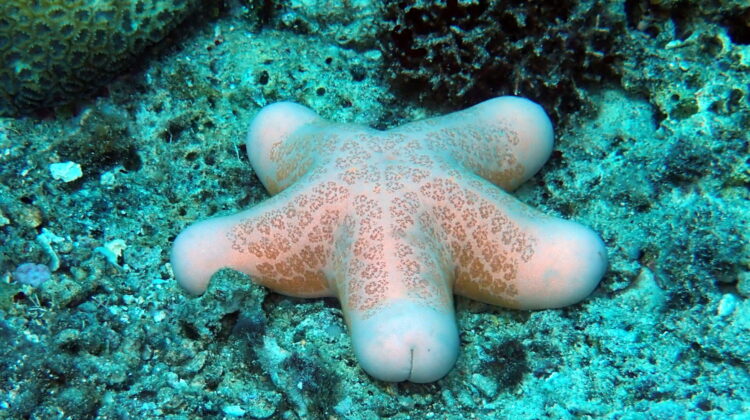
If you’ve ever stumbled upon subreddits like r/mildlypenis, r/intentionallypenis, or r/oddlyarousing, chances are you’ve encountered the Choriaster granulatus, better known as the granulated sea star. Renowned for its arm-like appendages that bear an uncanny resemblance to a certain male anatomical feature, this starfish has become the unintentional star of online discussions. However, before you jump to any NSFW conclusions, it’s time to set the record straight – what you’re really looking at is a whole lot of head.
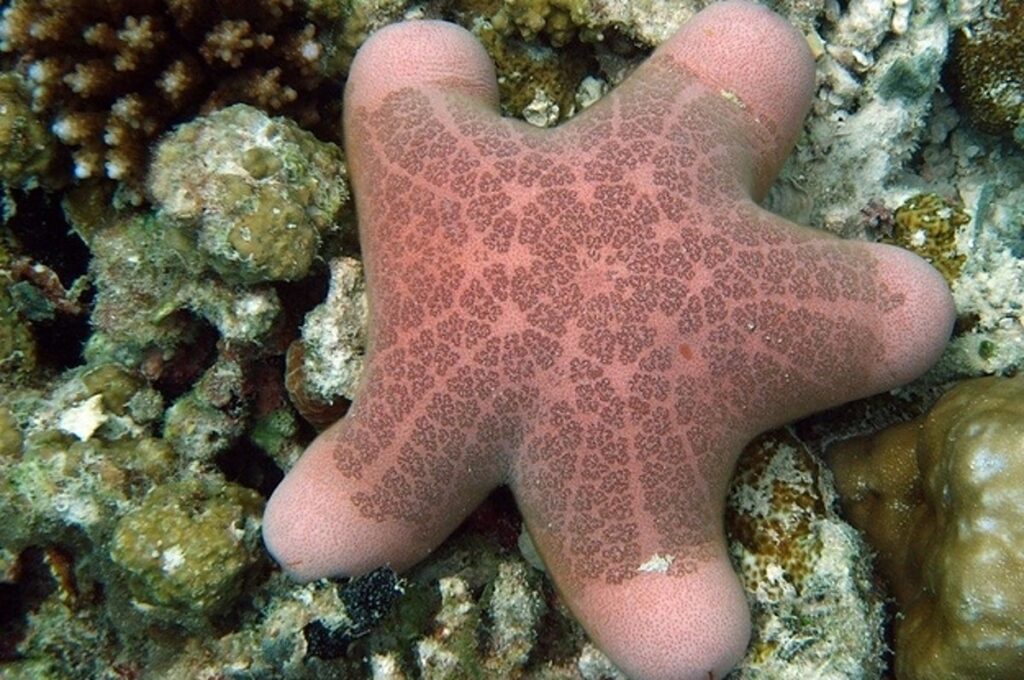
The granulated sea star, scientifically identified as C. granulatus, is a native of the Indo-Pacific region, where it thrives in warm waters and leisurely sprawls across various surfaces, from rocky terrains to coastal coral reefs. While these sea stars can be solitary creatures, they also exhibit a penchant for forming groups.

Image credit: Harry Rosenthal via iNaturalist, CC BY-NC 4.0
These carnivorous beings conceal their mouths beneath their somewhat doughy bodies, earning them the endearing moniker of “doughboy starfish” reminiscent of the Pillsbury Doughboy. Though they typically sport the classic five-armed sea star appearance, parasitic limpets sometimes distort their symmetry by attaching themselves to the starfish’s underside.
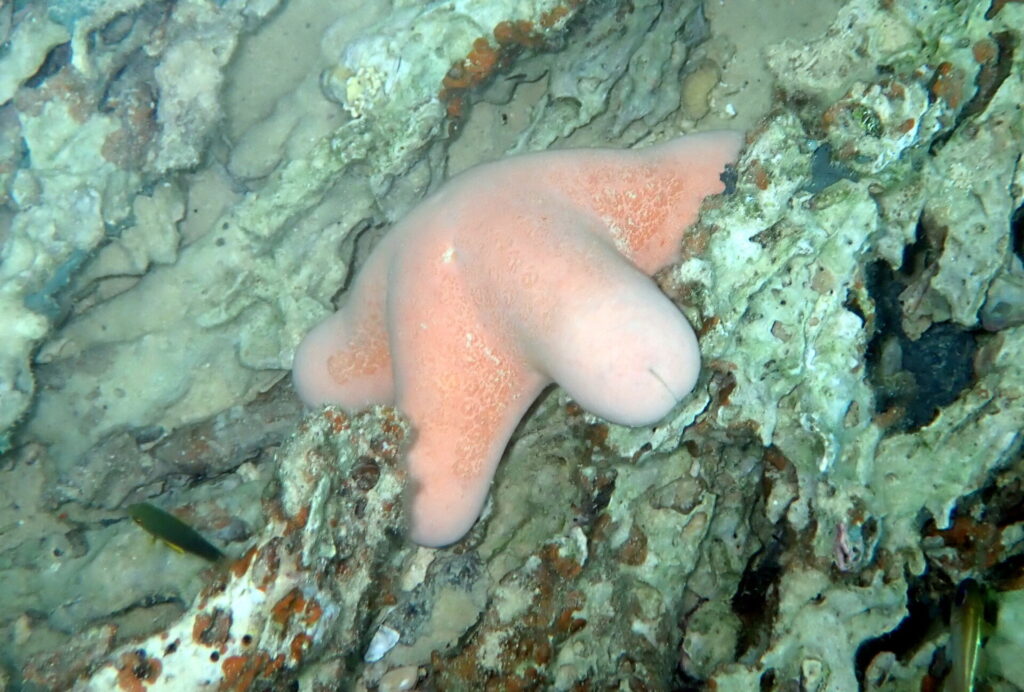
The revelation that the granulated sea star’s “arms” are, in fact, a manifestation of its head came to light in a groundbreaking 2023 study. Researchers employed a combination of imaging and genetic techniques, crafting a 3D atlas of starfish gene expression. Micro-CT scanning unveiled the starfish’s skeletal structure, muscles, and various systems, while RNA tomography and in situ hybridization used fluorescent labels to highlight gene expression.

Contrary to the traditional belief that starfish possess no distinct head or tail, the study found that the granulated sea star’s head comprises regions distributed in both the center of its body and the center of each limb. Essentially, what we perceive as the starfish’s body is more akin to a head – a revelation that challenges scientists’ previous assumptions about these marine creatures.
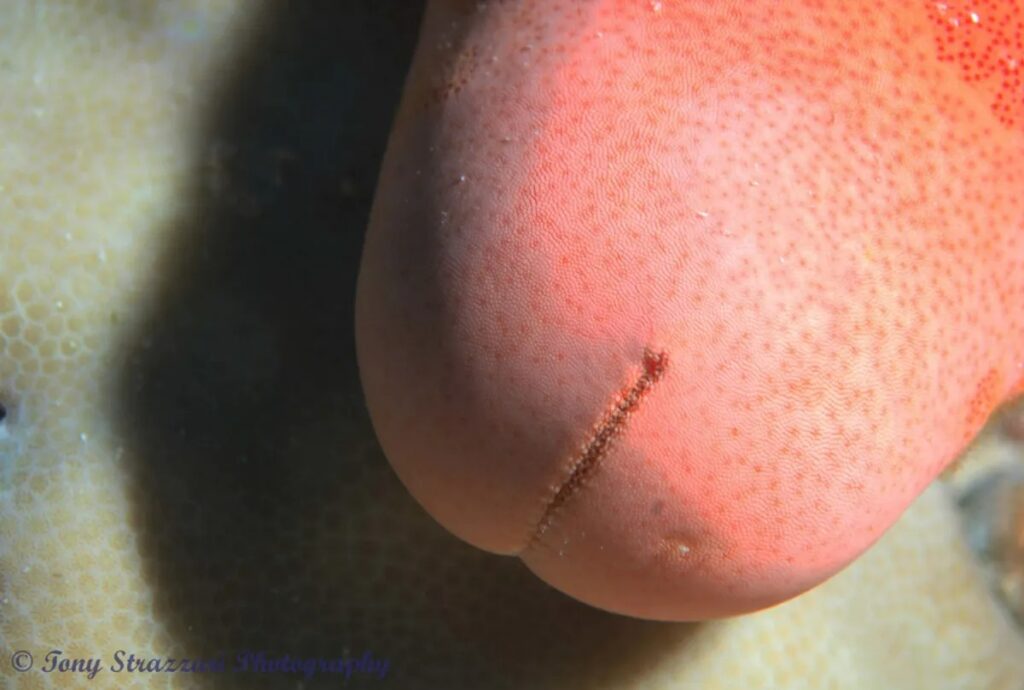
Image credit: Tonydiver via iNaturalist, CC BY-NC 4.0
Laurent Formery, the lead author of the study, remarked, “It’s as if the sea star is completely missing a trunk, and is best described as just a head crawling along the seafloor. It’s not at all what scientists have assumed about these animals.”
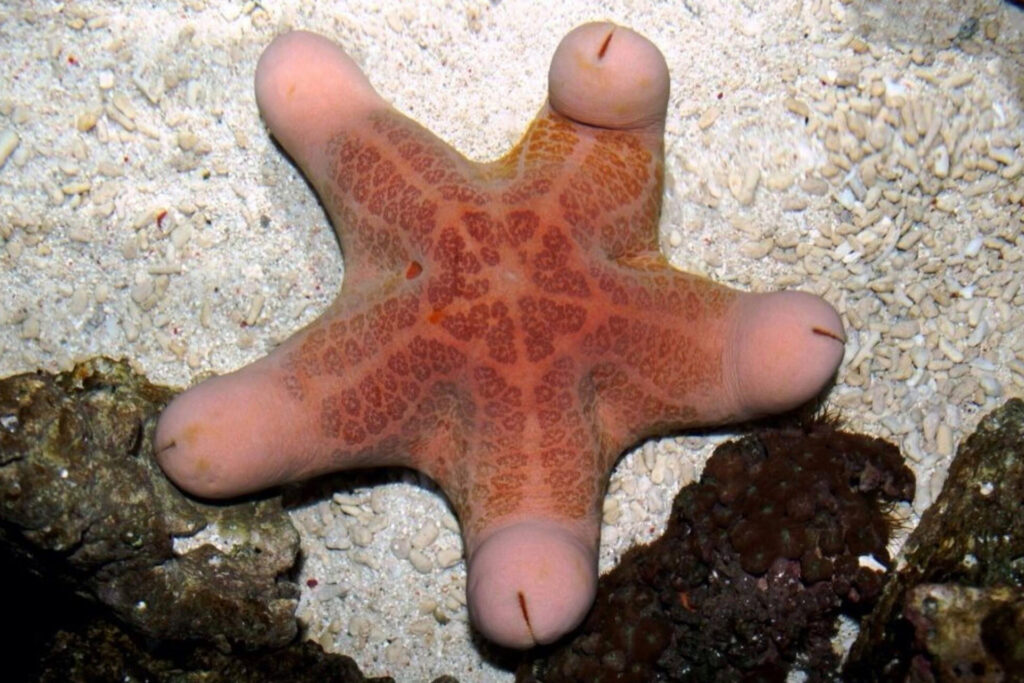
So, before you playfully label the granulated sea star as a cluster of something NSFW or liken it to the Pillsbury Doughboy, take a moment to appreciate it for what it truly is – one of nature’s quirkiest examples of a head in the marine world.

Leave a Reply